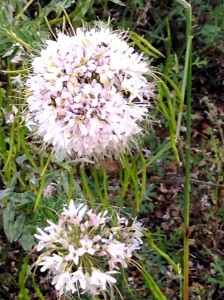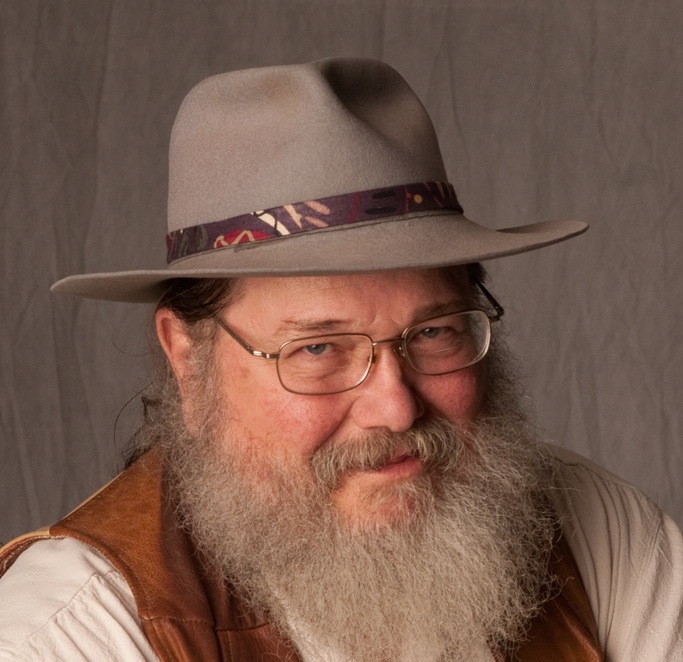 The storm clouds boil up the eastern sky until a wall of gunmetal gray curls over and above me. A westering sun fires up the corn and pole beans and the tall shaggy pines that border the over-achieving garden. They stand like cardboard cutouts against the backdrop of the approaching monsoon storm. Blunt fingers strum the strings of my pensive heart. I get in the car and drive slowly down my cinder road appraising the border of rank sunflowers, amaranth and primrose. Three foot high patches of bee balm lift sturdy stems to airy balls of amethyst flowers. Winged seed pods wave along their branches like feathers on a Sioux war lance. Beyond the barbed wire fence the bee balm spreads in royal profusion beneath troubled skies.
The storm clouds boil up the eastern sky until a wall of gunmetal gray curls over and above me. A westering sun fires up the corn and pole beans and the tall shaggy pines that border the over-achieving garden. They stand like cardboard cutouts against the backdrop of the approaching monsoon storm. Blunt fingers strum the strings of my pensive heart. I get in the car and drive slowly down my cinder road appraising the border of rank sunflowers, amaranth and primrose. Three foot high patches of bee balm lift sturdy stems to airy balls of amethyst flowers. Winged seed pods wave along their branches like feathers on a Sioux war lance. Beyond the barbed wire fence the bee balm spreads in royal profusion beneath troubled skies.
Several years ago by the four-way stop I spotted a snow white bee balm in the midst of all its purple brethren—a resounding yes in a field of maybes. Beyond its singularity the white flower appealed to me on a deeper level. Perhaps because it was a rebel, a non-conformist marching to a different palette, I felt a vague kinship. I watched for it each time I pulled up to the stop sign that summer until all the blossoms matured into identical skinny seed pods that shivered in the autumn breeze. I regretted not saving some seed from that special plant. One hundred yards on down the road towered the remnant of a windbreak of Lombardy poplars probably planted in the ’40s. The distinctive silhouette of branches clasped close to a trunk that lifted to 120 feet was a familiar landmark when I lived on the South Dakota prairies. It is generally accepted that all of these trees are descended from a single mutated male Black poplar tree growing in Lombardy, Italy in the 1700s and then propagated worldwide by cuttings. Folks have been paying attention to unique and individual plants for a long time and taking advantage of nature’s whims to selectively breed new varieties.
In the midst of this lush fullness and fruition my friends have been checking out on me. One, I just looked away and when I turned back he was gone. He split the scene. He found a shady place somewhere else to play his banjo. Another friend had been taking leave for five years. It was all too obvious. He left us piecemeal—diabetes and stroke spiriting him away in raw chunks. He always thanked me for traveling from the “Holy Lands of the East” to visit him. He led a solitary life and sometimes went weeks without company and I secretly feared I would find him dead when I made the trip across the mountain. I suffered with him and I confess I felt a deep relief at his passing. The society he craved so desperately in his last years all turned out for his memorial to state how important his life had been to them. As I attended the third memorial service I couldn’t help but muse upon the comfort he might have taken from these sentiments while he still lived.
I recently found an envelope with a dozen 35mm slides. The images were just too tiny to identify so I printed them. The prints revealed a 1978 camping trip in the Black Hills of South Dakota with friends and my young family. My wife is sporting her newly bobbed haircut and daughter Ruth is a newborn babe in arms. Eldest son Aaron is a 9 year old following our friend Jim around like a puppy. Jim who is witty and funny and compassionate and still has nightmares about Vietnam. In one frame Jim holds his fly rod and looks through the camera lens and deep into my heart with a question in his eyes. One year later Jim shot himself in a tourist motel and left his beautiful young wife and four children under six years of age.
The air this morning had an edge of ice—clean and sharp as though it came down from a mountain glacier. The promise of autumn in the midst of summer’s bounty is a bittersweet legacy. This vibrant world of plants surrounding me is filled with its own passing. I felt a little stab of pleasure/pain when the early sun lit up the fat fuzzy heads of gramma grass swarming across the hillside like dark bees. I’m depressed, it’s early but not really unseasonal. For years my depression has presented like the wall calendar in a movie where the summer’s pages blow away and melancholy music cues and a honey colored light suffuses the scene.
My heart is low as I cruise the back roads. I pop a CD into my car player as I roll along. It’s a recording I made of Megan Buchanan about seven years ago reading from a collection of her poems called Clothesline Religion. The familiar warm tones and rising inflection of her voice conjures a vivid holograph of her tall willowy form, pale face with cinnamon on cream freckles and ice blue eyes framed in copper-dark hair. Megan speaks the rituals of domesticity, her laundry, the smell of her daughter’s hair and the contents of her garbage can. I find myself breathing deeper to the rhythm of her voice. Her poem “A New Moon over Wing Mountain” becomes a benediction for me alone.
In “For Eddie” Megan re-visits a schoolmate’s fatal car crash. Grief was never modeled in my home. When I was 12 Uncle Jim was buried in the community cemetery that shared a barbed wire fence with our 11 acres. I watched the blue and black Fords and Chevys and faded green pickups park in the shade of pecan trees among the white tombstones. I witnessed the group gathered around the open maw of his grave from our backyard. Nobody from my house attended the service. When all the cars left I visited his grave and marked the smell of the carnations and gladiolas in the showy arrangements.
Today I wander the old lake bed which is Doney Park, awash in the gold and green of sunflowers. Megan invokes the creator of snowflakes, finches and pearls. I pull over by a gravel lined ravine to listen. There in a particularly robust patch of bee balm, I spy a ball of ivory blossom, shaggy as a buffalo’s head.

